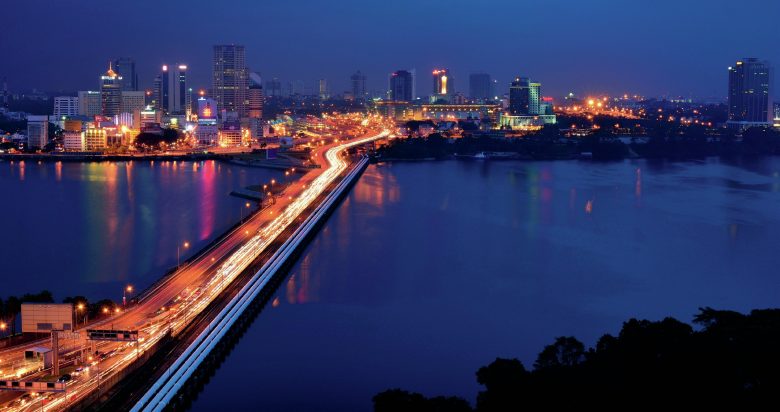CASE STUDY
Zara: fast or green fashion?
Phil Waterhouse looks at Zara’s attempts to improve sustainability while maintaining market share

EXAM LINKS
This case study is relevant to the following topics in the AQA, Edexcel, OCR and WJEC/Eduqas A-level specifications:
■ business ethics
■ corporate social responsibility
■ theories of corporate strategy
■ global marketing strategy
■ promotion and branding
■ product and service design
■ research and development
■ global competitiveness
In The Muppets, Kermit the Frog famously sang about how it is not easy to be green. Businesses may agree and, with more customers demanding more ethical sourcing of raw material, meeting customer needs can be extra challenging. One industry where this challenge is felt is fast fashion, which has built its success on fast reactions to customer demands and producing clothes quickly that drive consumers to adapt to the everchanging trends within the market.
Fashion retail used to be based on providing ranges of clothes for each of the four seasons: spring, summer, autumn and winter. However, the Spanish fashion giant Zara decided to re-write this model. The average Zara store will bring in new stock twice a week. This means that there are now 104 seasons and this drives the demand for customers to visit stores more frequently. Zara customers are estimated to visit a Zara store 3.5 times compared to rival stores. These more frequent visits create environmental issues of their own, but the biggest issue is the amount of raw material that is used in the production of garments sold by Zara and other competitors within the industry.
The ever-changing designs on offer in the nearly 2,000 Zara stores worldwide have created a hugely profitable business that enjoys yearly revenues of just under US$4 billion. This is based on annual sales of 450 million items — over 850 a minute. It is no wonder that the reclusive owner of the business, Amancio Ortega, regularly features in the top 10 of the world’s richest individuals. With profit margins just under 10% on each item sold, the company has managed to perfect the strategy of high speed, large volumes and competitive prices to enjoy market leadership status within a competitive industry. However, last year Ortega handed over the reins of the company to his youngest daughter, Marta, who has realised the strategy that has brought so much success is arguably in need of an overhaul. At the top of the agenda is improving sustainability.
Environmental cost
The fashion industry was one of the outliers of the global pandemic. Despite physical stores being shut and with people on lockdown not needing to purchase clothes for events, the e-commerce part of the sector thrived. Between 2000 and 2015, the number of garments being produced each year doubled from 50 billion to 100 billion across the industry. According to the Ellen MacArthur Foundation, consumers are wearing each item less than before and about 87% of all the clothes produced end up in landfill sites or are incinerated. The environmental cost of the industry is one that can no longer be ignored.
Zara has a lower carbon footprint than some of its competitors. It looks to use manufacturers close to its headquarters in northern Spain where possible and, at a push, will use cheaper production factories in Eastern Europe rather than importing from Asia. However, the air miles of goods are a fraction of the overall environmental cost. The far bigger issue is the volume of garments that it is making, and the raw material required. It becomes difficult to square the circle of continued growth in sales, while reducing the environmental impact.
Raw material
One of the areas that Zara is keen to pursue is the use of alternative fibres in the production of its garments. The use of cotton is particularly damaging to the environment in terms of water consumption. Zara has invested in its own R&D sustainability hub to try and identify possible carbon-neutral fibres that can be used in the production of its garments. There are several possible options, but so far, no magic solution.

One option is to make use of recycled fishing nets and carpets, which reduces the amount going to landfill. A second option is to make use of seaweed and plant fibres to create a new type of yarn. This is great for the planet but is much more costly as an option. A third option, already being used for some products, is pineapple skins. These are good for making bags and shoes and make use of a waste product, but in practical terms, it takes 16 pineapples to make just one yard of fabric, so is not economically viable. Hence, the firm is keen to find a better alternative that is more practical in the long run. Zara is particularly excited about one possible option that involves a process that reverse engineers polyester-cotton blends to turn them into cotton and PET polymers, which are both fully reusable. The polyester-cotton fabrics make up over 50% of the global textile waste, so this process could be a game changer.
Customer choice
However, one of the issues for the industry is to tread a path between offering more sustainable garments and identifying how many consumers will choose these garments over existing choices. Currently, in a Zara store, you could choose a US$7 T-shirt made from brand new polycotton or spend US$20 on a T-shirt made from organic fibres. The reality is that most consumers will still opt for the cheaper option. This makes it harder for the firm to then reach the greater economies of scale achievable if more organic cotton T-shirts are chosen, which would then help narrow the price difference between the two options. It could be argued that this price discrimination model suits Zara as they can charge more to the more environmentally conscious customer and still be seen to be fulfilling their sustainability targets. However, this is not the case.
Zara, under the new leadership of Marta, has decided that it is not going to wait for consumers, but is going to bring about the change itself. It has committed to cutting water consumption by 25% by 2025 and plans to have all its stores running on renewable energy by the end of 2023. More significantly, it is aiming to have over 50% of its clothes form part of its Join Life label. This label indicates that the material is either organic, recyclable or made from more sustainable materials.
However, this last strategy has attracted criticism from pressure groups as they argue that this labelling is an in-house tactic that acts as a form of greenwashing. Just as Nike has done previously, Zara realises that it needs to be at the forefront of making sustainability the key principle of how it operates and does business. As the number one clothing retailer in the world, it is ideally placed to change and shape the supply chain of the future. It has the cash reserves in place to weather the changes that need to be made and the technology to drive its sustainability goals.
The company has long made use of the sales data provided by the RFID tags that go on all its garments. It has been able to track and monitor very closely what is selling and manage stock levels accordingly. As the data begins to reveal more consumers are purchasing more eco-friendly products, that tells the company to increase production.
Whether consumers will be persuaded to move away from their focus on price remains to be seen, but Zara believes that the market will change over the next 10 years and that it needs to be in a position to exploit it.
PRACTICE EXAM QUESTION
Assess the extent to which Zara’s use of just-in-time (JIT) production may have contributed to its success. (10 marks, Edexcel)
BusinessReviewExtras
Get guidance for your answer at www.hoddereducation.co.uk/businessreviewextras





